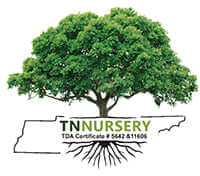
Big, Beautiful Shade Trees
Share
Shade Trees: A Closer Look at Elm, Beech, Catalpa, Hickory, and White Oak Trees
Shade trees are not just beautiful additions to our landscapes; they provide numerous ecological, aesthetic, and practical benefits. They offer cool respite on hot summer days, contribute to air and water quality, support wildlife habitats, and enhance the overall quality of life in urban and suburban environments. Among the diverse shade trees, Elm, Beech, Catalpa, Hickory, and White Oak trees stand out for their unique characteristics and contributions.
Elm Trees: Majestic Canopies and Dutch Elm Disease
Elm trees (Ulmus spp.) have long been cherished for their towering canopies and graceful arching branches, creating an iconic silhouette in many landscapes. Historically, they were highly valued as street and park trees due to their fast growth and expansive shade. The American Elm (Ulmus americana) was particularly popular before the devastating outbreak of Dutch elm disease. Dutch elm disease devastated the Elm populations across North America and Europe during the 20th century. The disease spreads primarily through bark beetles, disrupting the tree's vascular system and causing wilting and eventual death. This outbreak led to a significant decline in Elm populations and a reevaluation of urban tree-planting strategies. Efforts to combat Dutch elm disease have included:
Breeding disease-resistant Elm varieties.
Implementing sanitation practices to remove infected trees.
Promoting better tree care practices to prevent its spread.
Despite these challenges, Elm trees continue to be valued for their historical significance and are slowly returning in many regions.
Beech Trees: Elegance and Nutritional Richness
Beech trees (Fagus spp.) are renowned for their smooth gray bark, distinctive leaves with wavy edges, and their ability to create a dense, lush canopy. They are often associated with stately woodlands and are prized for their elegance and visual appeal. Beech trees produce beechnuts, triangular nuts housed in spiky husks, an important food source for wildlife. Beechnuts are highly nutritious and provide sustenance for various wildlife, including birds, squirrels, deer, and bears. The nuts are high in fats and proteins, making them valuable, especially during the fall when other food sources may be scarce. Beech trees also contribute to soil health by depositing leaf litter, which enriches the soil as it decomposes.
Catalpa Trees: Unique Flowers and Eclectic Beauty
Catalpa trees (Catalpa spp.) are notable for their large, heart-shaped leaves and showy, orchid-like flowers that appear in late spring to early summer. The flowers are often white with purple or yellow markings and are known for their unique appearance. These trees are commonly planted for their ornamental value and are sometimes called "cigar trees" due to the long, cylindrical shape of their fruit capsules. The Catalpa tree's distinctive appearance adds an eclectic touch to landscapes, making them a popular choice for homeowners and gardeners seeking a tree that stands out. Their large leaves provide ample shade, and the unique flowers attract pollinators such as bees and butterflies, enhancing local biodiversity.
Hickory Trees: Strength and Utility
Hickory trees (Carya spp.) are known for their strength, durability, and the distinctive flavor of their nuts. Hickory wood is highly prized for its hardness and flexibility, making it a favored choice for tool handles, furniture, and sports equipment like baseball bats. The nuts, often enclosed in thick, hard shells, are edible and have a rich, slightly sweet flavor. Hickory trees are also crucial for wildlife, providing food for various animals, including squirrels, deer, and birds. The trees' robust canopies offer ample shade and contribute to soil stability, making them valuable additions to natural and urban environments.
White Oak Trees: Longevity and Ecosystem Support
White Oak trees (Quercus alba) are revered for their longevity, strength, and the valuable hardwood they produce. The wood of White Oak is used in applications from furniture and flooring to barrel-making for aging wine and spirits. The acorns of White Oak trees are less bitter than those of other oak species, and they provide essential food for wildlife. One of the distinguishing features of White Oak trees is their ability to support many wildlife species. The hollows in their trunks and large branches serve as nesting sites for birds and shelter for various mammals, while the insects and fungi associated with these trees form the base of complex food webs. White Oak trees are keystone species integral to maintaining healthy forest ecosystems.
Shade trees such as Elm, Beech, Catalpa, Hickory, and White Oak contribute significantly to our surroundings. They bring beauty and character to our landscapes while offering a range of ecological and practical benefits. From the graceful arches of Elm trees to the sturdy wood of Hickory trees, each species has unique qualities that supplement our lives and the environments in which they thrive. However, it's important to remember that the cultivation and care of these trees require thoughtful consideration to ensure their longevity and continued positive impact on our ecosystems.
